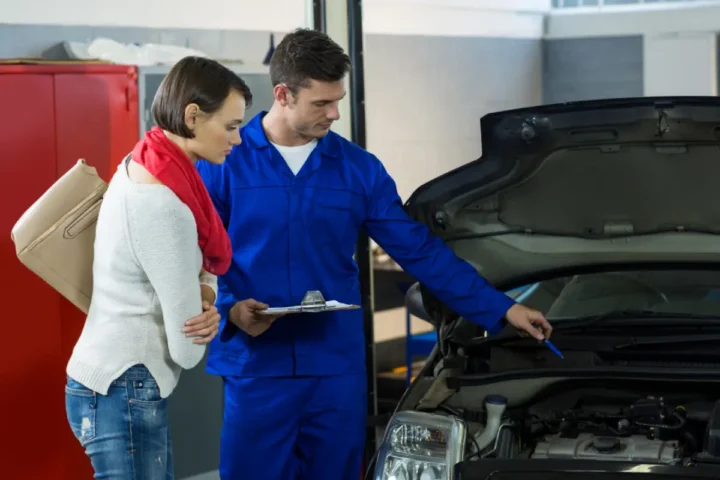How Certified Collision Centers Ensure Vehicle Safety After an Accident
Even minor deviations from repair protocols can lead to malfunctioning sensors, weakened structural zones, or compromised airbag timing in today’s cars. Certified collision centers must stay updated with new technology, train technicians, and update diagnostic tools to ensure trust and security for drivers and passengers.
After an accident, vehicle owners face visible damage and concerns about their vehicles’ safety and reliability. The process can be overwhelming, with many shops offering quick fixes. Certification is crucial to ensure equal standards in repair facilities.
Choosing a center such as a Subaru Certified Collision Center in Lancaster PA gives drivers confidence that the repair facility meets manufacturer benchmarks for expertise, training, and equipment. These standards are not merely about restoring looks; they focus on returning a damaged vehicle to its engineered state for safety and performance.

The Role Of Certification In Collision Repair
Certification isn’t just a badge displayed on the wall; it results from meeting rigorous requirements set by original equipment manufacturers (OEMs). Regular audits, annual hands-on training sessions, and ongoing education equip technicians to handle everything from structural alignment to recalibrating the latest advanced driver-assist features. For customers, this means the parts, repair methods, and paint-matching reflect exactly what the engineers intended when they built the car.
Vehicles restored under these strict protocols are more likely to perform correctly in future collisions. For example, airbags deploy on time, crumple zones absorb impacts as intended, and complex sensors detect hazards dependably. Small mistakes—like misaligned parts or incorrect adhesives—can weaken overall crashworthiness or technology response without these controls.
An Inside Look At The Certified Repair Process
Comprehensive Vehicle Assessment:
- Certified collision centers conduct thorough digital and manual inspections, using diagnostic scanners to detect hidden electrical issues or component failures that traditional checks might miss.
- Every part of the frame, body, and mechanical systems is carefully examined. Shops typically use 3D measuring tools alongside factory blueprints to identify millimeter-level deviations that could affect airbags or impact absorption.
Selection Of OEM Parts:
- Certified shops use OEM components, which the manufacturer tests for safety and fit. While aftermarket or recycled parts may be cheaper, they can sometimes compromise crash performance and durability.
- This focus on compatibility ensures electronic systems, like forward-collision warning or lane assist, work seamlessly after repairs, which wouldn’t be guaranteed if replacement parts didn’t match factory specifications.
Precise Structural And Cosmetic Repairs:
- Repairs involve more than just appearance. Certified technicians utilize laser alignment, advanced welders, and paint-matching systems to restore the body’s integrity and maintain structural zones that absorb crash forces.
- Reassembly requires specifics, down to the torque settings on bolts and the sequence for reconnecting safety systems, to ensure everything performs at OEM standards if another accident occurs.
Rigorous Quality Control:
- Multiple checkpoints are built into every step. These include post-repair diagnostic scans, functional road tests, and visual inspections led by a senior technician or manager.
- Repairs must pass each of these before the keys are handed over, and documentation must be maintained in case of future insurance or vehicle resale needs.
Why Post-Accident Repairs Can’t Be Overlooked
Rushed repairs or skipped steps can compromise critical vehicle systems. Airbags might not deploy, sensors may misread conditions, and crumple zones could fail during impacts. These issues often remain hidden until an accident reveals them, with common problems including misaligned frames or faulty electrical connections.
Additionally, improper calibration of safety features like automatic emergency braking can endanger others on the road. Certified collision repair addresses these risks, restoring vehicle integrity and ensuring all safety systems function properly for drivers and surrounding vehicles.
Clear Communication At Every Step
Clear communication is essential for reputable certified collision centers. Rather than vague promises, experienced facilities provide detailed repair plans, explain the choice of OEM parts, and clarify timelines. This transparency is invaluable for motorists after a crash. Digital repair tracking enhances this experience, allowing customers to monitor progress online, view repair photos, and receive instant updates, which helps set expectations and demystify the repair process.
What To Inspect When Picking Up Your Vehicle
Before leaving the shop, it’s smart to approach your post-repair inspection methodically. A brief, careful review can catch oversights or misaligned panels before they become aggravating long-term issues. Start by walking around the car, noting the paint match and finish in clear sunlight and shade. Gently open and shut all doors, the trunk, and the hood, paying attention to how smoothly they operate and align.
- Verify dashboard systems for warning lights—no indicator related to the repair area should remain lit.
- Test critical safety features, such as seatbelts, airbags, and advanced driver assistance functions, whenever possible.
- Ask for a detailed copy of all repair documents, showing OEM part numbers and outlining the exact steps performed.
- Clarify the warranty. Most certified centers provide both parts and labor assurances, ensuring that any further issues are covered.
These steps can deliver peace of mind and prevent minor oversights from becoming bigger problems.


